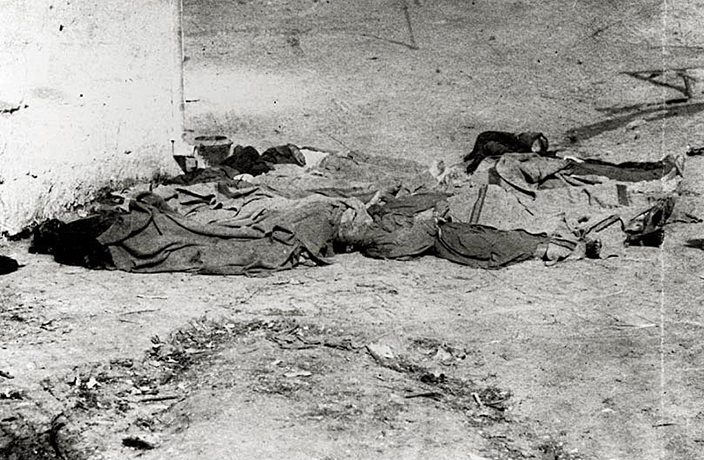On October 24, 1871, an incensed lynch mob gathered in Los Angeles, California and killed 17 Chinese men and boys. The event lies at the center of a story of guns, gangs, murder and corruption, the likes of which now typifies portrayals of the Wild West.
Made pariah for an alien culture and appearance and despised for being seen as undercutting American trade, Chinese men were maligned by many in California in the late 1800s. Popular books circulated rumors that Chinese immigrants were on track to take over California and had plans to install one of their own as governor. As a result, the state government had passed legislature that prevented any Chinese person from testifying against a white man, encouraging racism with impunity.
READ MORE: This Day in History - US Passes Chinese Exclusion Act
After a gunfight between feuding Chinese gangs attracted the attention of one of the city’s six lawmen, his investigation of the noise brought him a gunshot wound to the shoulder. He called for help and was attended to by a member of the public, who took it upon himself to apprehend the gangsters. The civilian was shot in the chest, and died an hour later.
His mortal wounding proved the spark needed to escalate the bubbling resentment in the city and galvanised a mob of 500 people, some 10% percent of the total population, to enact their own vicious vigilante justice. They laid siege and eventually overwhelmed the Chinese men, who had holed up in a building on Calle de los Negros (literally, ‘Negro Alley’) by tearing off the roof and reigning down gunfire. The mob smashed open the doors and dragged the men out.

Negro Alley, where the massacre took place. Image via City of Z Design
Wagons were turned upside down and a clothesline portioned up to fashion a makeshift gallows in a hurried frenzy to satisfy the bloodlust. Pleading for his life, Dr. Gene Tong, a city apothecary previously much liked within the community, tried to bargain with the mob offering them gold and a wedding ring. He was shot in the mouth and his finger cut off for the ring. In the end, 17 men and boys were hung in the largest mass lynching in American history.
Members of the mob were brought to court to see justice, but a number of notable participants in the lynching were missing from the ranks of the accused, including a future Sheriff and a serving city councilman.
Presiding over the case was John Widney, one of the few men in the city that had stood up to the mob. His actions saved the lives of four or five Chinese men. Though this seemed an auspicious turn for the prosecution in a time where Chinese people were socially and institutionally discriminated against, Widney was not a qualified member of the bar. In addition to this, several members of the jury had to be dismissed for their association with vigilante groups.

Los Angeles around the time of the massacre. Image via Michael Ryerson/Flickr
Despite the charges of murder, sentences of manslaughter were eventually handed out along with jail time ranging from two to six years. These convictions were set aside after it transpired that the prosecution, in a basic error, had not submitted evidence that Dr. Tong had been killed. The prosecution did not pursue a retrial.
The majority of the indictments never saw a courtroom and, after a while, were mislaid, meaning no future trial could take place. The miscarriage of justice allowed the city to quietly forget the racially-motivated events of 1871.
For more history stories, click here.
[Top image via Wikimedia Commons, h/t Ray Kwong]


















0 User Comments